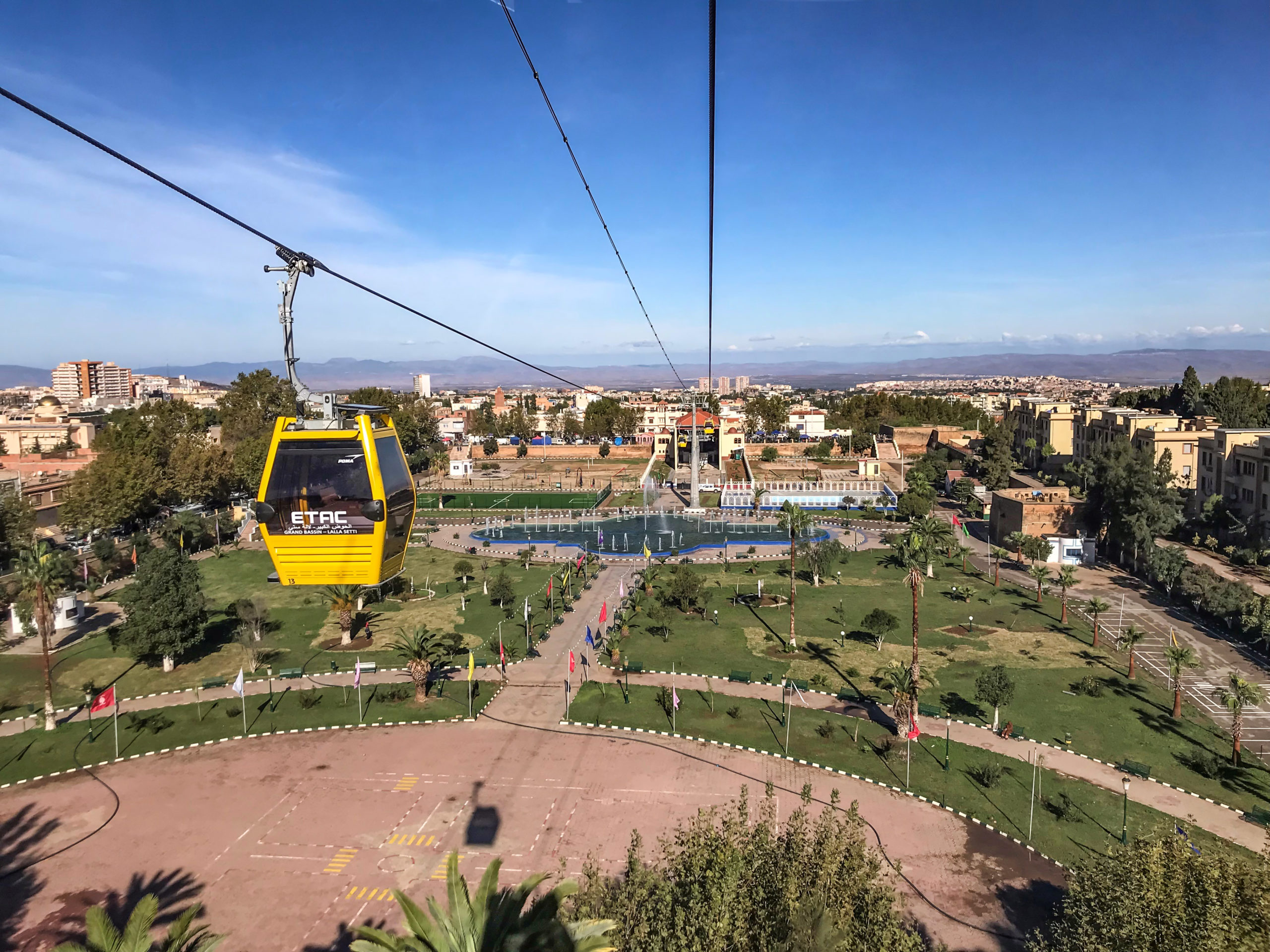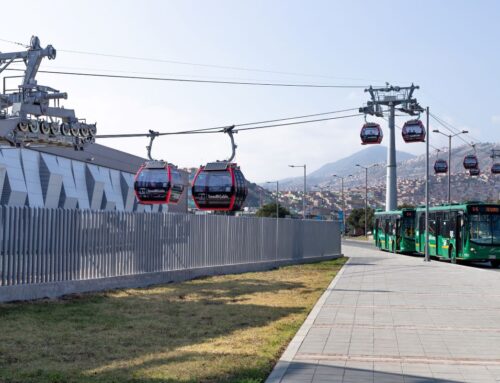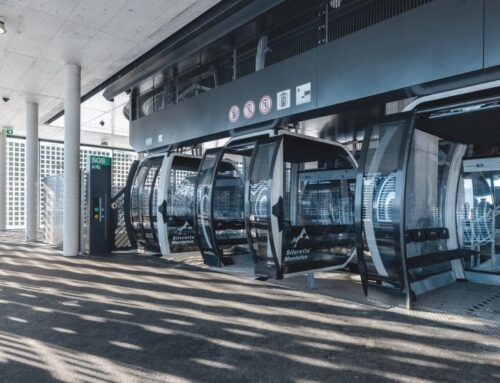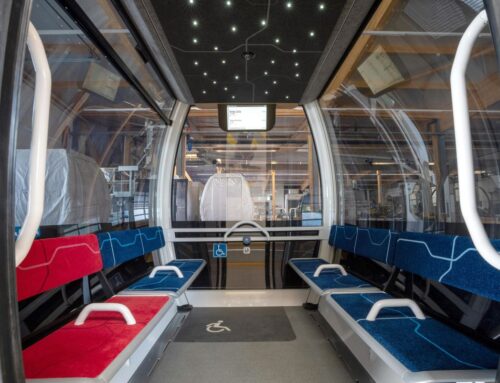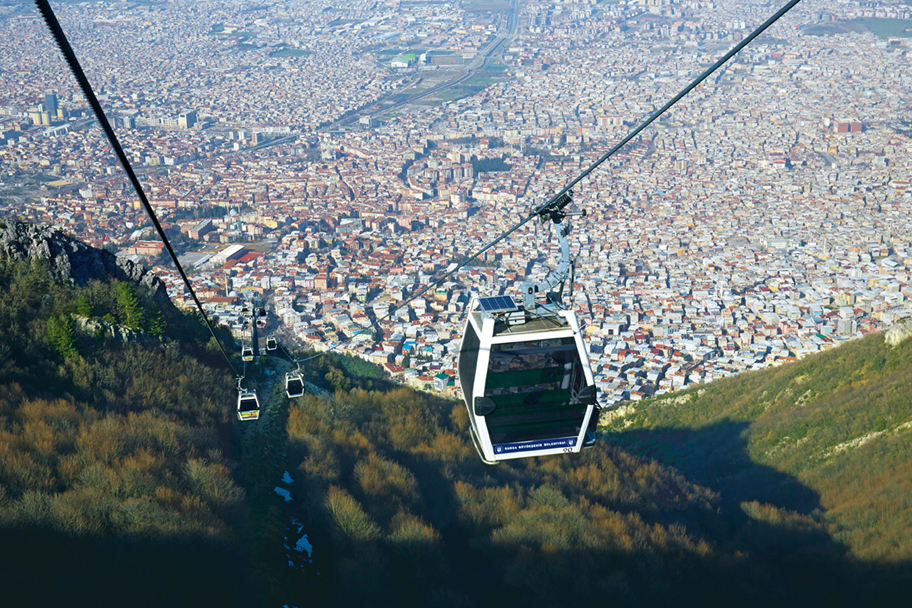
Cities, SI Urban 1/2022, Tourism
The benefit of cable cars for tourism
“In new tourist projects, cable cars are being used strategically to boost the provision and stimulate tourism. Cable cars that combine urban and tourist benefit are especially popular,” POMA Marketing Manager Carole Mancini says. In-house, the French cable car manufacturer distinguishes between three categories of tourist cable cars, although these can also be combined. First: cable cars in amusement parks. One example here would be the Beauval zoopark. It offers a unique experience in France
for the 1.5 million annual visitors who enjoy fantastic views over many areas of the park, aboard gondolas with glass flooring. Second: Providingaccess to a tourist destination. The cable car in Yen Tu (Vietnam), for example, is notable here. It runs up a temple mountain and is used by over two million passengers per year. Third: The cable car as an attraction in itself. This is the case for example in Tlemcen (Algeria). Here the cable car actually serves as a classic urban mode of transport for everyday use, but thanks to the tourists it transports 3,500 people per day at weekends – significantly more than on work days.
“All over the world, (urban) tourist cable cars are used by around 300,000 passengers per year,” Mancini highlights the potential: “a ticket costs 30 euros on average and the yields are accordingly high.” We must also emphasise the tourist benefit of urban public transport, such as on the cable car in Namur, which opened in 2021. This now allows many residents to travel from the suburbs to the city centre in only four minutes; timetables have therefore been extended, in order to benefit daily commuters.
Example: Teleferik Alanya (Turkey)
By way of example for the world’s many city tourism facilities, SI Urban takes a closer look at two cable cars in Turkey. One is the Teleferik Alanya from Italian cable car manufacturer LEITNER, which is located in the Turkish region of Antalya.
The Mediterranean climate, scenic attractions and historical heritage make Alanya a popular tourist destination, accounting for nine percent of the Turkish tourist industry. “The Alanya cable car has been operated by the eponymous holding company since 2017. The aim is to stimulate and improve the quality of tourism.
The cable car considerably strengthens the transport network in the area of the historic Alanya Castle, a UNESCO world cultural heritage site,” LEITNER Marketing Manager Gotthard Schöpf says.
The cable car offers a fast transport service (one gondola every 19 seconds) and is equipped with 14 8-person gondolas. The track, which is around 900 metres long, has a transport capacity of 1,130 people per hour.
This all makes the cable car in Alanya a popular mode of transport – especially for tourists. Consequently, within only one year, the number of passengers increased from 851,800 (2018) to 1,035,800 (2019). Most passengers come from Russia, Germany, Ukraine or Denmark.
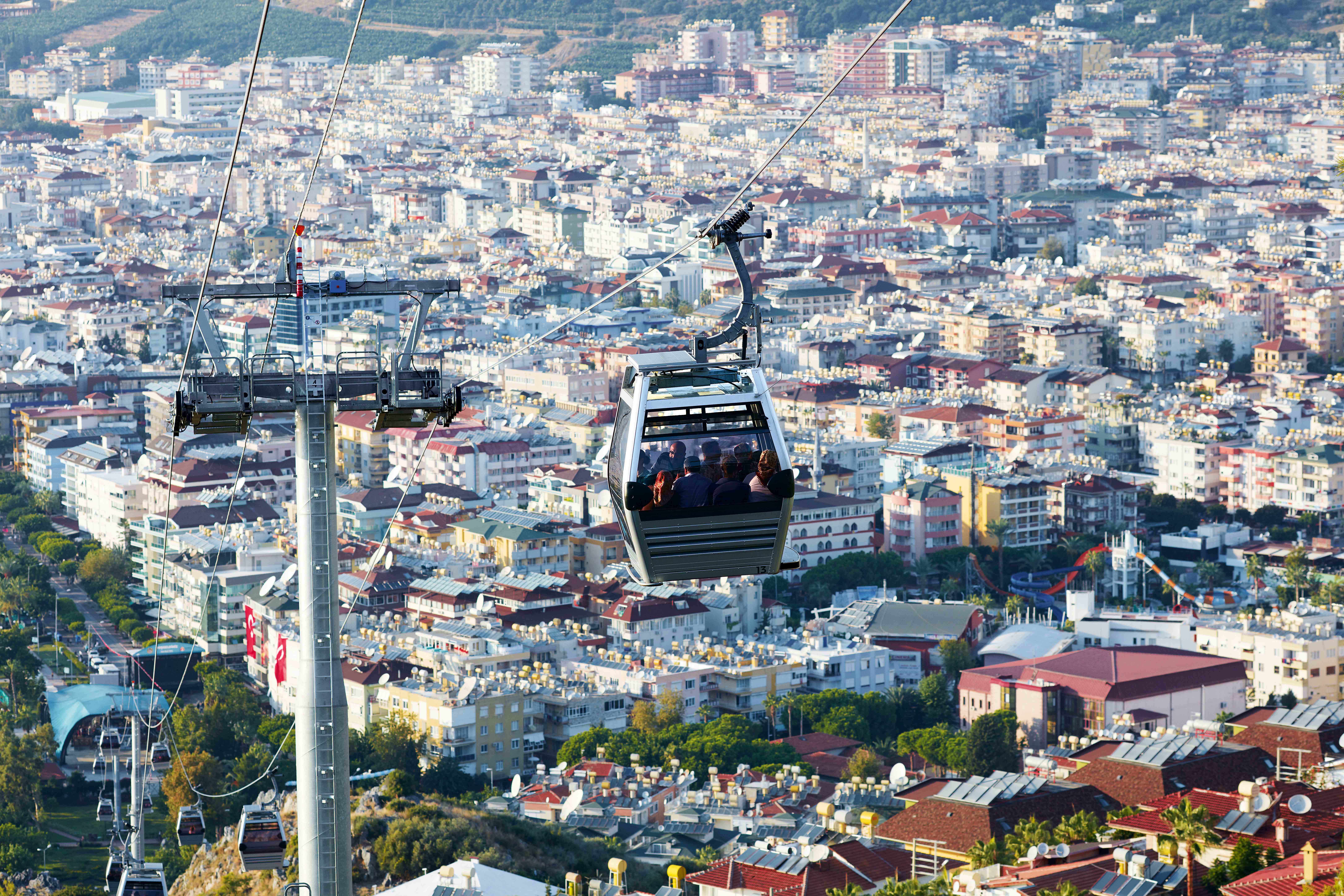
Example: Bursa Teleferik (Turkey)
The cable car in Bursa is another good example in urban tourism. The city has a population of 3.5 million. From there, the LEITNER cable car runs up Uludağ (the Great Mountain) and can transport 1,500 people per hour.
At 8.8 kilometres, it is one of the world’s longest single-cable circulatingtracks. Also, Uludağ is Turkey’s most popular ski resort. Domestic tourists come here from Bursa itself as well as Istanbul, Ankara and Izmir.
In the summer, many guests come from the Middle East, including from Saudi- Arabia, Kuwait and Qatar. “Operator Bursa Teleferik A.Ş. shaped a new type of tourism and lifestyle with the opening of the eponymous cable car in 2012. Whilst the cable car technology provides an ecological transport system, the stations are designed as event centres,” Schöpf reports.
Guests should forget their previous holiday habits and enjoy an exceptional experience on the journey. With the cable car, the operator is also supporting the destination in its aim of becoming a globally popular tourist destination – both for winter sports and in MICE tourism (meetings, incentives conferences, exhibitions).
The figures prove the operators right: passengers numbered 983,700 in 2019.
